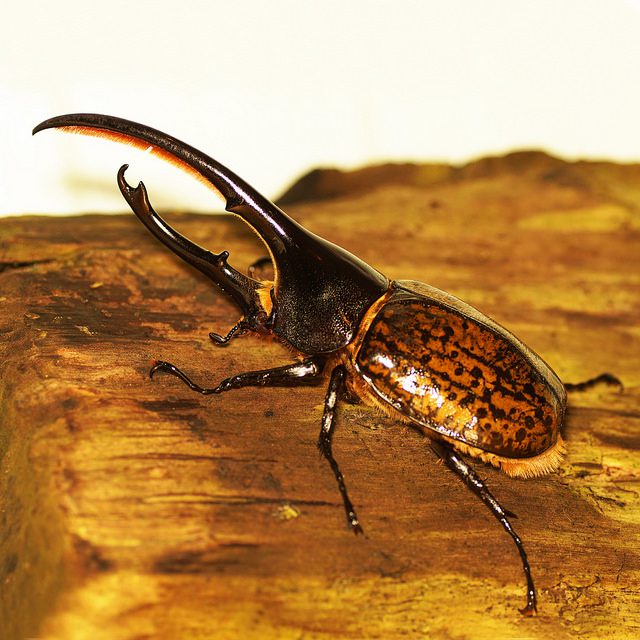Dynastes hercules lichyi
L2 Larvae
Species Info:
Origin
Lifestyle
Temp
Humidity
Leg Span
Disposition
Suitability
The Hercules beetle (Dynastes hercules) is the most famous and the largest of the rhinoceros beetles. It is native to the rainforests of Central America, South America, and the Lesser Antilles. The beetle has also been observed as far north as Southern Veracruz in Mexico. Their title is well deserved, with some able to lift more than 80 times (up to 8 kg (17 lbs) lifted) their own weight and some males, rarely, reaching 17 cm (6.75 inches) in length. This is the equivalent of an 80 kg (176 lb) human lifting a 68-metric ton (75-short ton) off-road dump truck.[1] It is the largest of the six species in the Dynastes genus, and one of the largest beetles known, being exceeded in length by only two other beetles in the family Cerambycidae, Macrodontia cervicornis (specimens of 17–17.5 cm are known) and Titanus giganteus (also up to 17–17.5 cm; several 18+ cm specimens are reputed/alleged to exist). However, if the horns are excluded, both M. cervicornis and D. hercules drop considerably farther down in the size rankings, leaving T. giganteus on top. One reason for this is that the development of the horns is allometric, as well as sexually dimorphic, and thus not strictly correlated to actual body size; it is possible for a female to be much longer, measured from eyes to abdomen, than a male, yet be considered “smaller” simply due to the absence of horns.
As noted above, Hercules beetles are highly sexually dimorphic, with the females generally being larger-bodied but much shorter, as they lack horns entirely. The larval stage of the Hercules beetle will last one to two years, with the larva growing up to 4.5 inches (11 cm) in length and weighing more than 100 grams. Much of the life of the larva is spent tunneling through its primary food source of rotting wood. After the larval period, transformation into a pupa, and moulting, the beetle then emerges as an adult. Adults will roam the forest floor in search of decaying fruit.
